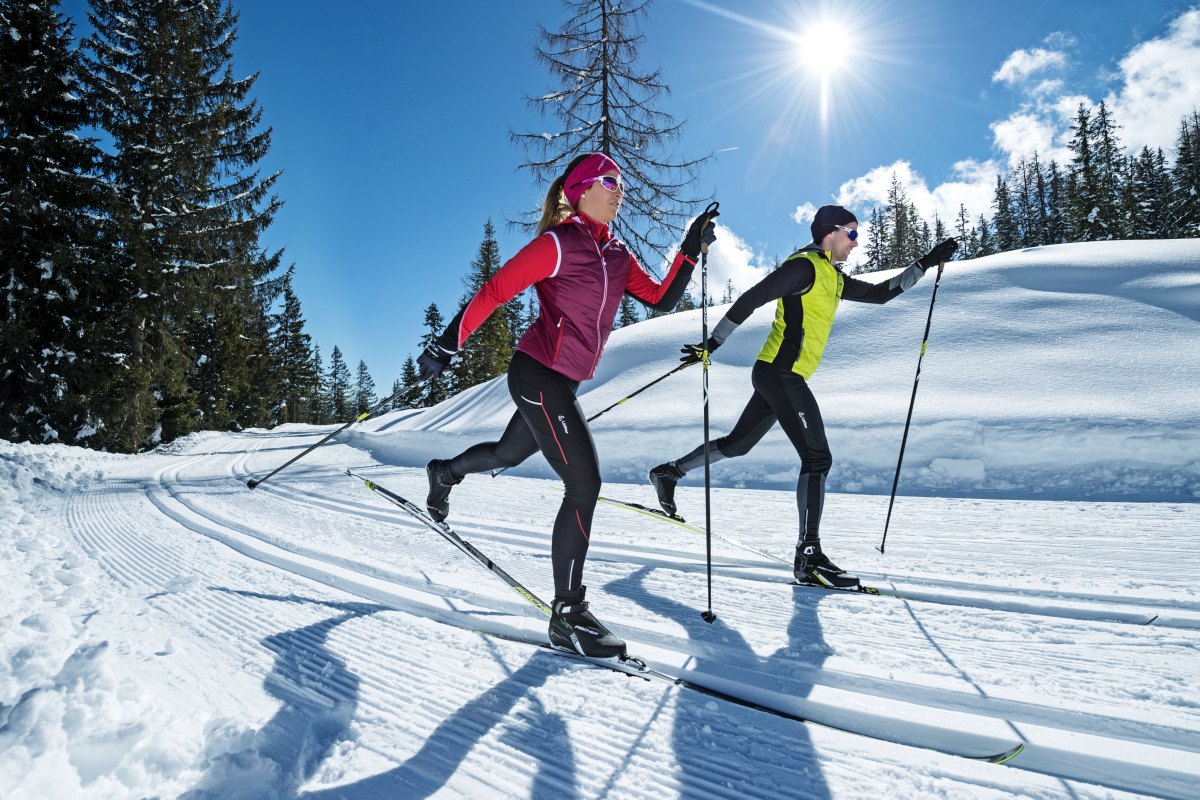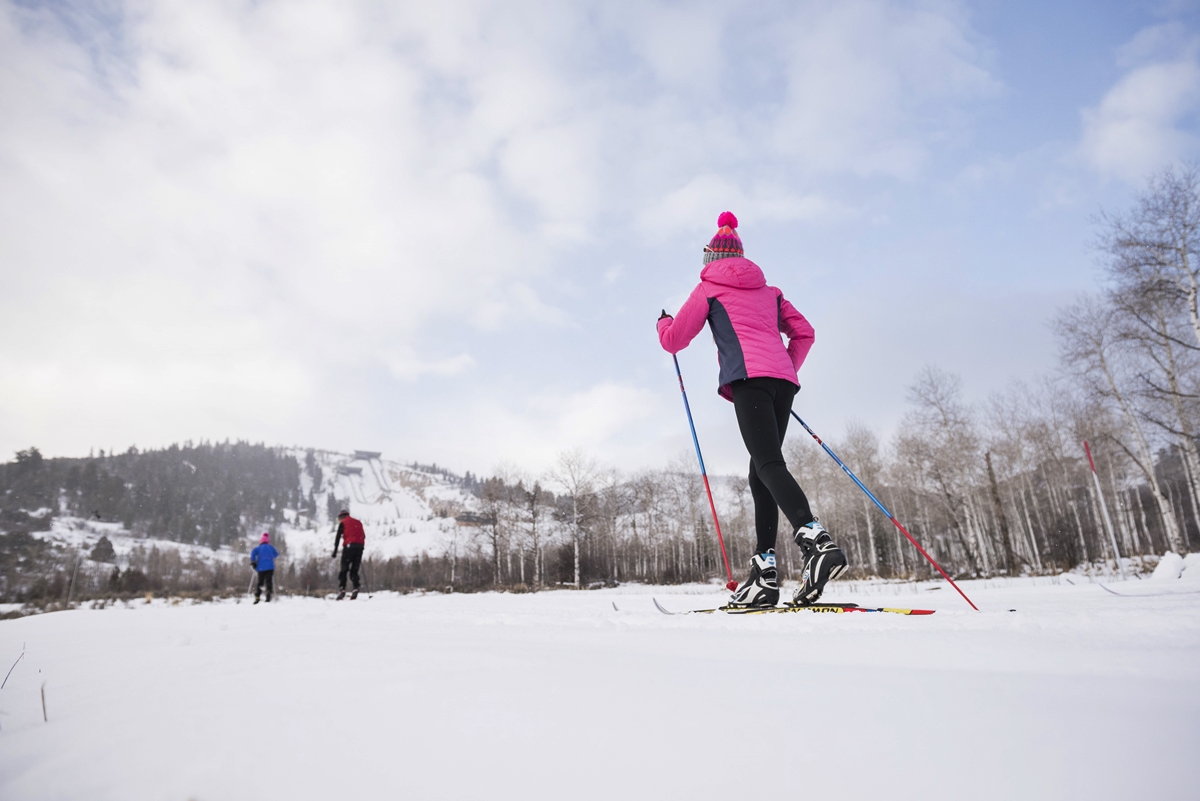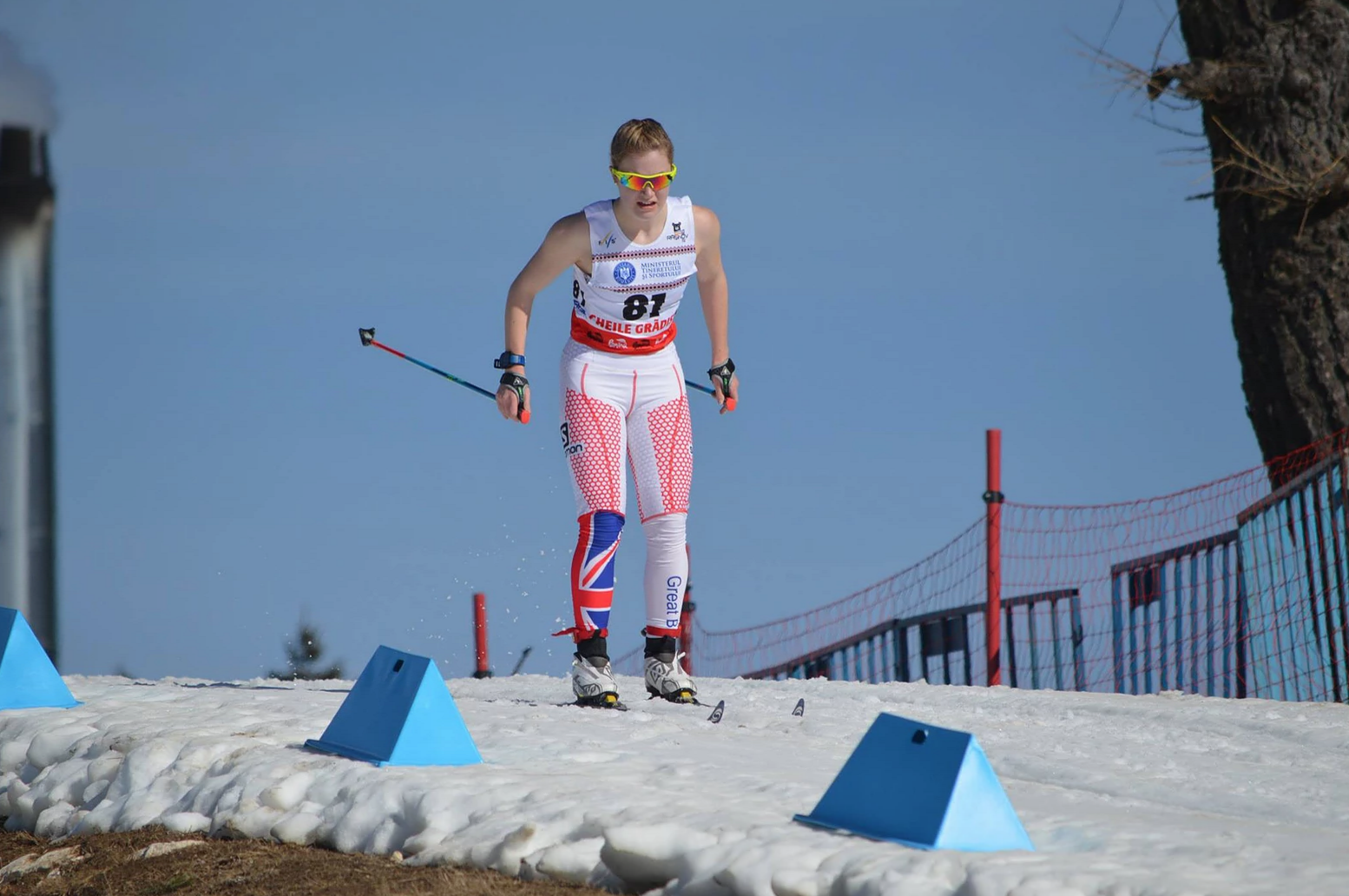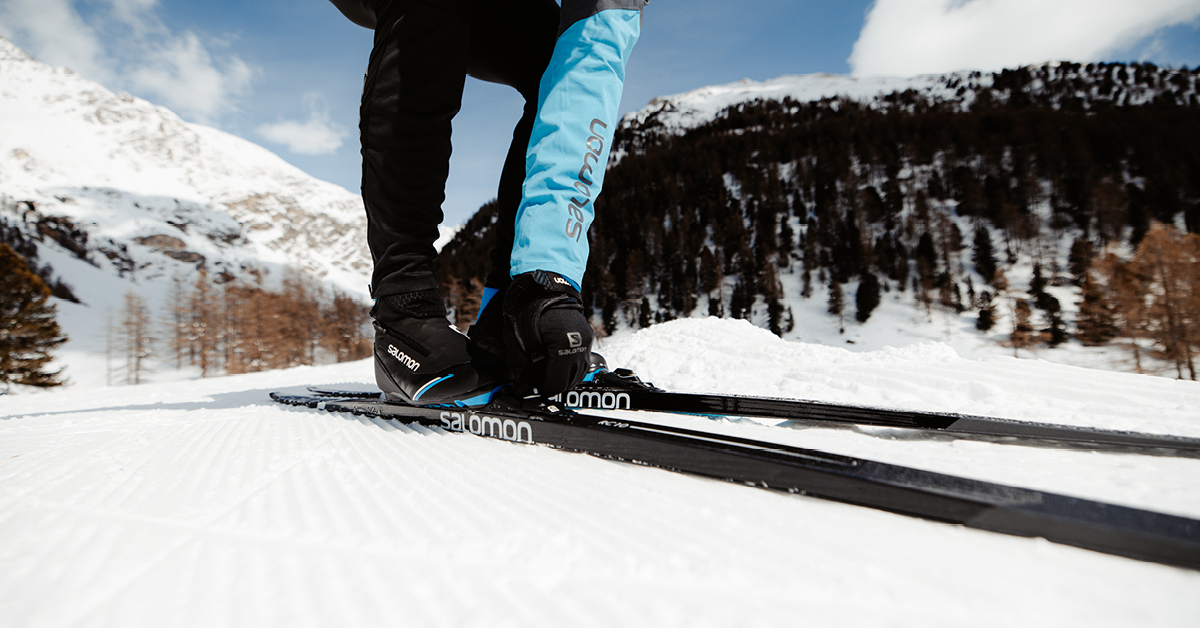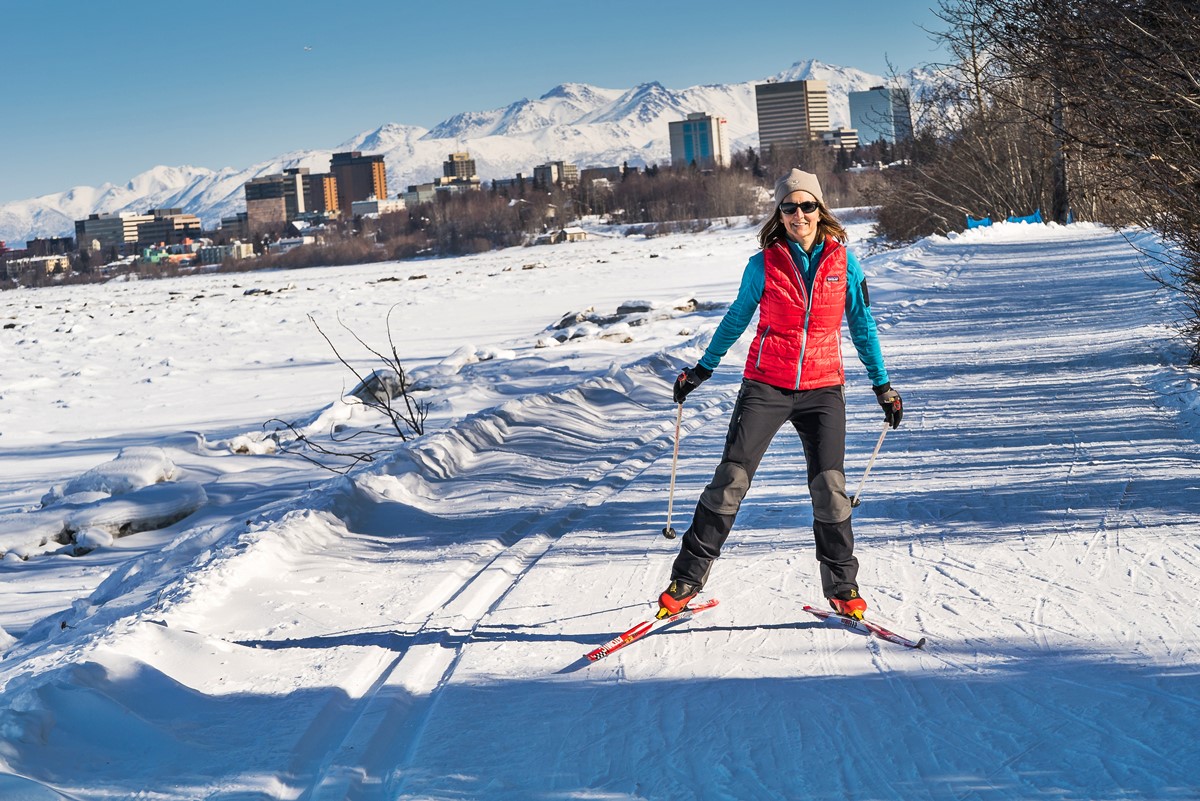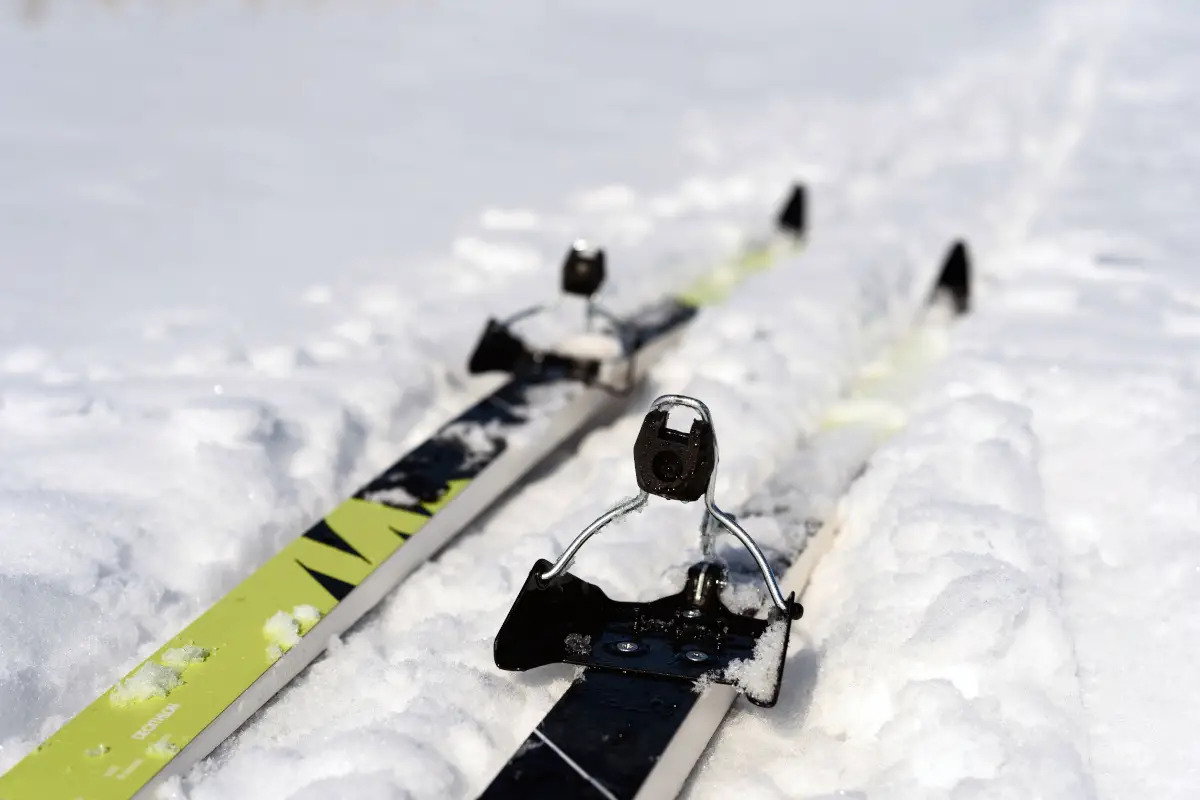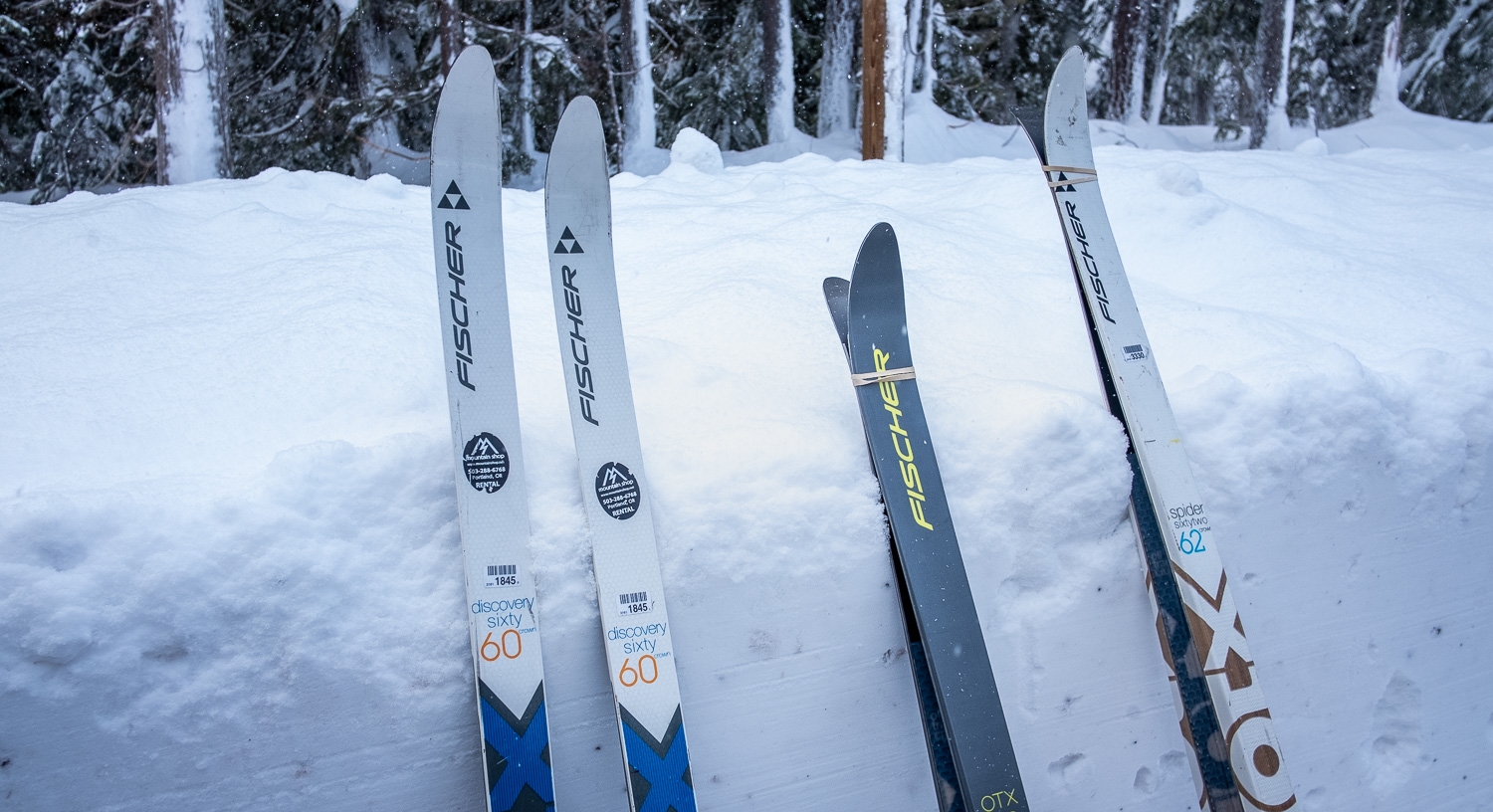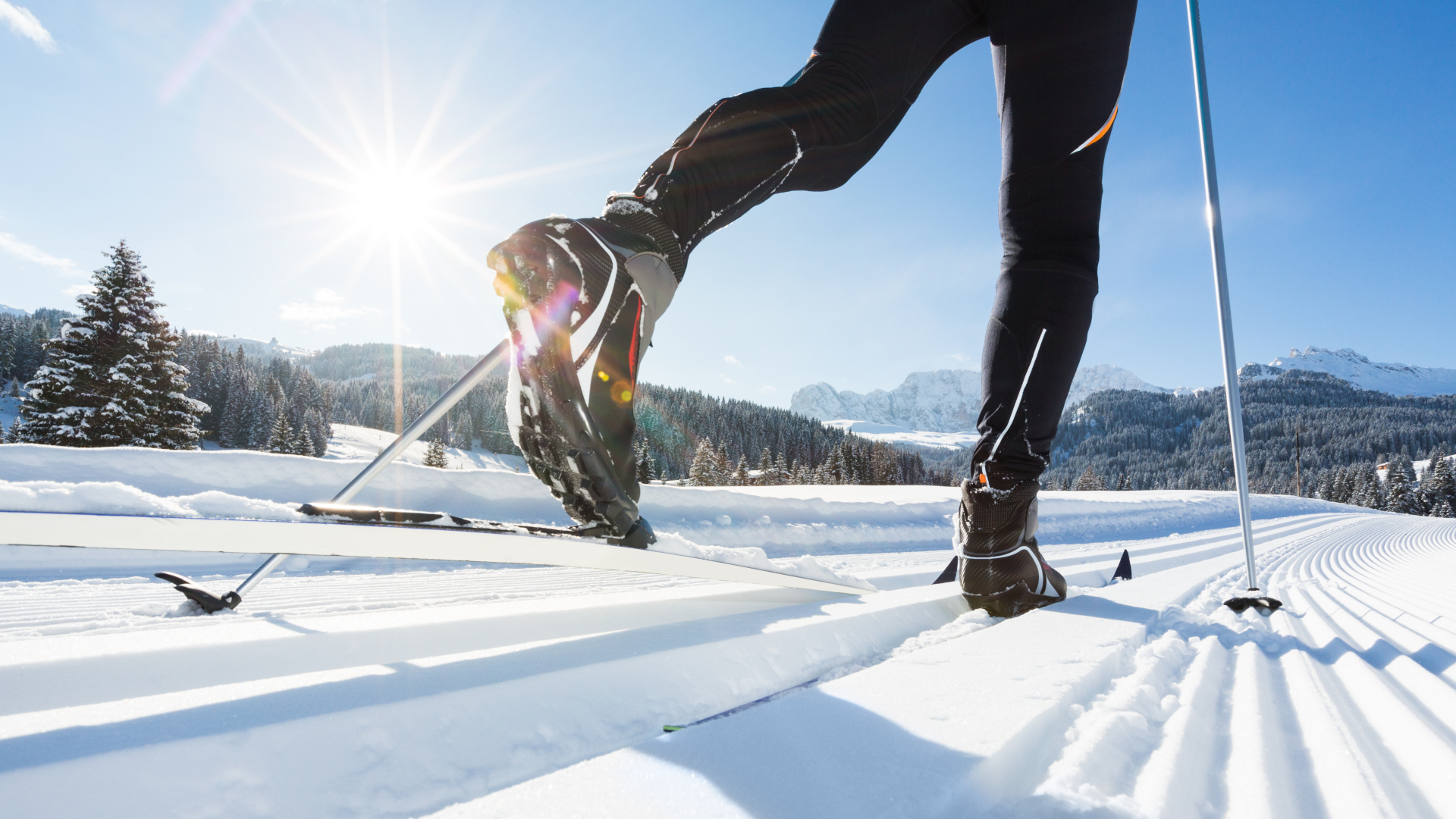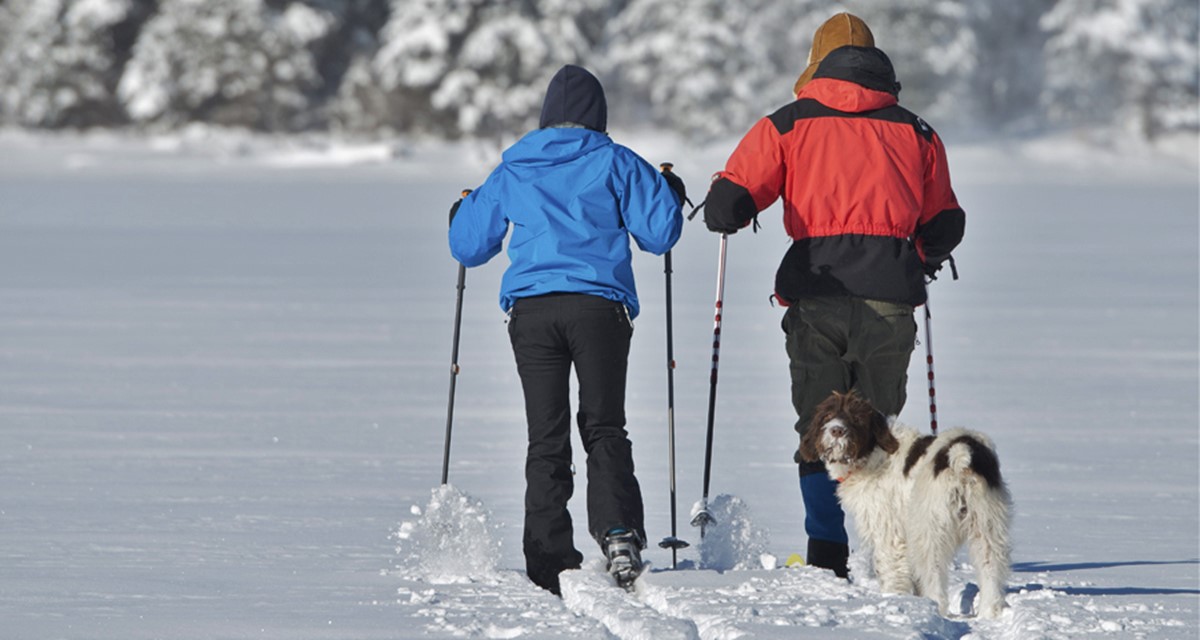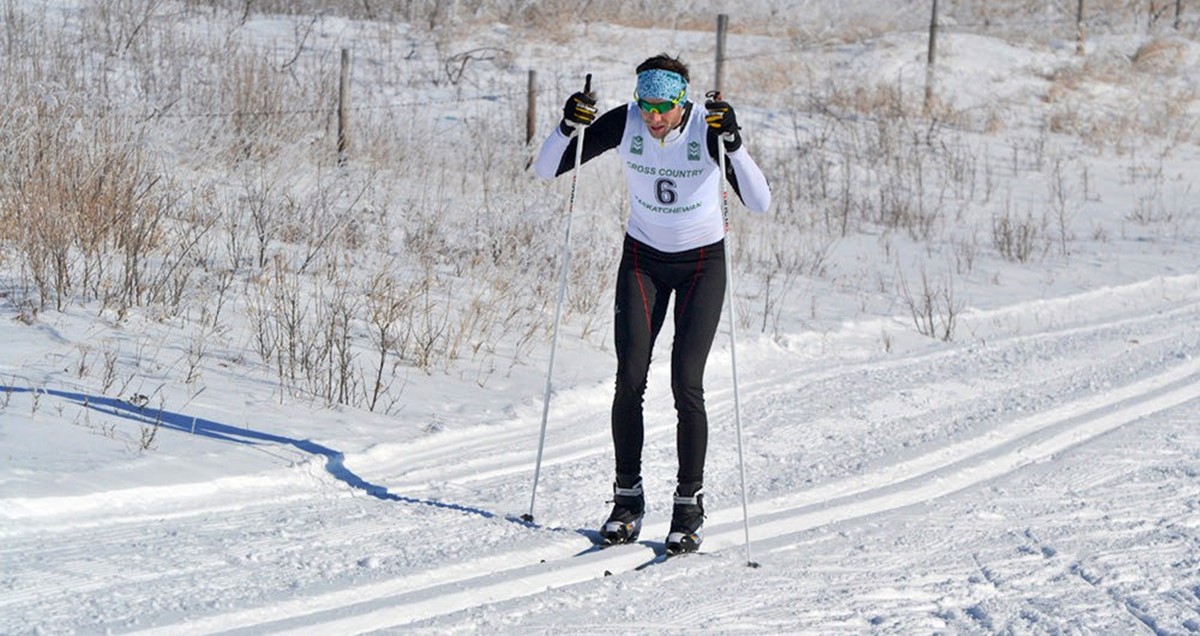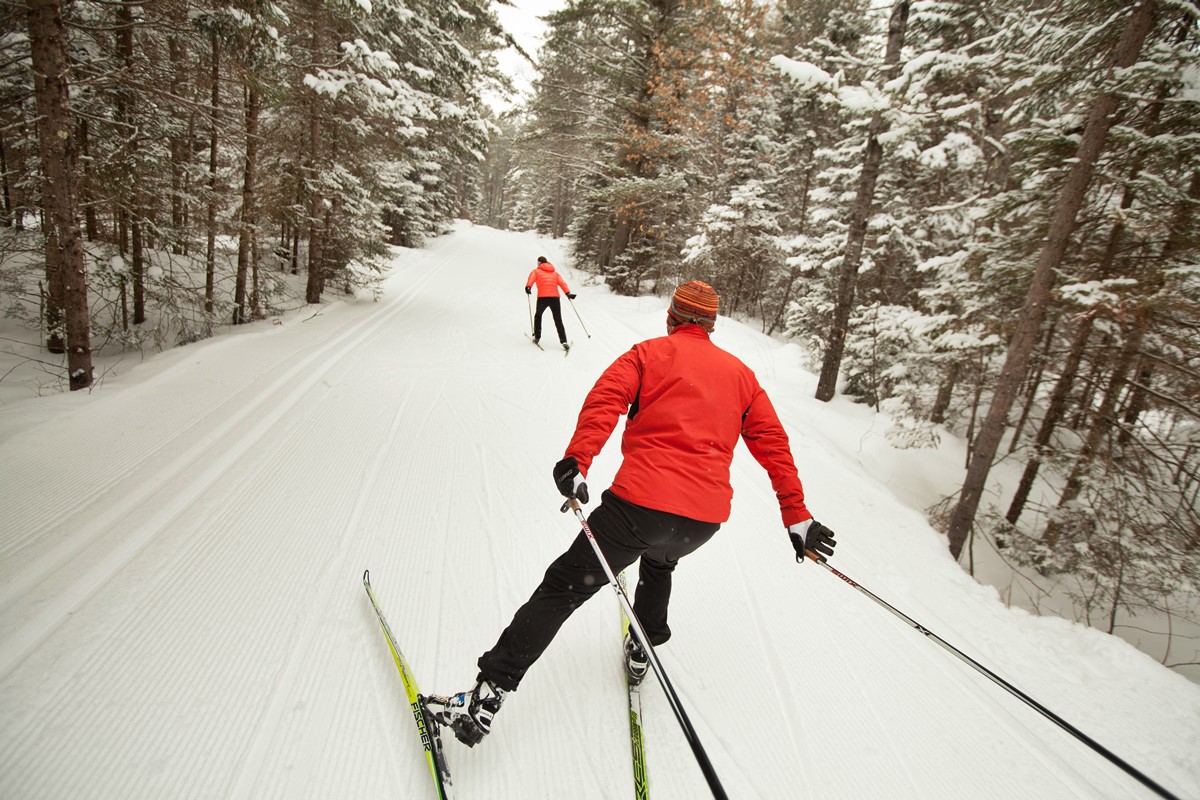

Featured
What Is Cross Country Ski
Modified: January 22, 2024
Discover the thrill of cross country skiing with our featured guide. Learn what cross country skiing is and how to get started in this exhilarating outdoor activity.
Introduction
Cross country skiing is a popular winter sport that combines endurance, skill, and a deep connection with nature. Whether you are a seasoned athlete or a beginner looking for a new way to stay active during the colder months, cross country skiing offers a unique and exhilarating experience.
Unlike downhill skiing or snowboarding, which focus on the thrill of speed and navigating through challenging terrain, cross country skiing is all about endurance and technique. It involves gliding across flat or gently rolling terrain using skis with bindings that allow your heels to lift off the skis.
Not only is cross country skiing a fantastic way to enjoy the beauty of winter landscapes, but it also provides a full-body workout. The rhythmic motion of pushing and gliding engages your muscles, improves cardiovascular fitness, and burns a substantial amount of calories.
In this article, we will explore the world of cross country skiing, from its definition and history to the equipment needed, techniques and styles, health benefits, popular destinations, and safety tips. By the end of this article, you will have a deeper understanding of this exhilarating sport and be inspired to hit the trails.
Definition of Cross Country Skiing
Cross country skiing, also known as Nordic skiing, is a form of skiing where individuals use skis to travel over snow-covered terrain. Unlike downhill skiing or snowboarding, which focus on descending slopes, cross country skiing is primarily done on flat or gently rolling terrain, making it a more endurance-based sport.
The technique used in cross country skiing involves a diagonal stride motion, where skiers push off against the snow with one ski while gliding forward on the other. This motion is repeated in a coordinated rhythm, creating a smooth and efficient way to move across the snow.
One of the key features of cross country skiing is the use of binding systems that allow the skier’s heels to lift off the skis. This enables a natural walking or running motion, making it easier to navigate through various snow conditions and terrain. It also allows for greater stability and control, especially when climbing uphill or traversing uneven surfaces.
Cross country skiing can be enjoyed in a variety of settings, including groomed trails, backcountry areas, and even urban parks. It offers a peaceful and immersive experience, allowing skiers to explore stunning winter landscapes and connect with nature in a unique way.
As a sport, cross country skiing is practiced both recreationally and competitively. Recreational cross country skiing is a popular activity for individuals of all ages and fitness levels, providing a fun way to stay active during the winter months. Competitive cross country skiing, on the other hand, involves racing against other skiers in events such as sprint races, long-distance races, and relay races.
In essence, cross country skiing is a dynamic and versatile winter sport that combines physical fitness, skill, and a love for the great outdoors. Whether you are seeking a challenging workout, a peaceful escape, or a thrilling race, cross country skiing offers something for everyone.
History of Cross Country Skiing
Cross country skiing has a rich and storied history that dates back thousands of years. Originating as a means of transportation and survival in snowy regions, it has evolved into a beloved sport enjoyed worldwide.
The roots of cross country skiing can be traced back to ancient times when early civilizations discovered the need to traverse snowy landscapes for hunting, gathering, and trade. The earliest evidence of skiing dates back over 4,000 years, with ancient rock carvings in Norway depicting skiers gliding across the snow.
Throughout history, cross country skiing played a crucial role in the lives of Nordic and Scandinavian cultures. It provided a reliable mode of transportation during harsh winters, allowing people to travel efficiently across long distances. It was also used for military purposes, with ski-equipped soldiers using their skills for reconnaissance and combat.
In the 18th century, cross country skiing began to take on a more recreational aspect. Norwegians developed an interest in ski touring, exploring the mountains and forests with skis. By the 19th century, competitive skiing became popular, with the first documented cross country ski race held in Norway in 1842.
The sport continued to grow in popularity and spread to other parts of Europe and North America. In the early 20th century, ski clubs were formed, and organized cross country ski races became regular events. Cross country skiing made its Olympic debut at the 1924 Winter Games in Chamonix, France, solidifying its status as a competitive sport.
Over the years, advancements in equipment and techniques transformed cross country skiing into a more accessible and enjoyable activity for all. Traditional wooden skis gave way to lighter and more efficient materials such as fiberglass and carbon fiber. Ski bindings evolved to provide better control and stability, and ski boots became more comfortable and supportive.
Today, cross country skiing is practiced worldwide, attracting millions of enthusiasts who appreciate its blend of physical activity, scenic beauty, and the opportunity for outdoor exploration. It continues to be a popular winter sport, both recreationally and competitively, and has gained recognition for its health benefits and accessibility to all age groups.
As we celebrate the history of cross country skiing, it’s clear that this timeless sport has come a long way from its humble origins. It remains a cherished activity that honors tradition while embracing progress, providing endless opportunities for individuals to experience the joy and excitement of gliding across snowy landscapes.
Equipment Needed for Cross Country Skiing
When it comes to cross country skiing, having the right equipment is essential to ensure a safe and enjoyable experience on the snow-covered trails. While the specific gear may vary depending on the type of skiing and terrain, there are some essential items that every cross country skier should have.
1. Skis: The most important piece of equipment for cross country skiing is, of course, the skis. Cross country skis are designed to be longer, narrower, and lighter than downhill skis. They come in various styles, including classic and skate skis. Classic skis are suitable for groomed trails and feature a grippy kick zone under the binding for traction. Skate skis, on the other hand, have a smooth, gliding base and are used for more dynamic and fast-paced skiing on packed snow or icy trails.
2. Boots: Cross country ski boots provide stability, support, and insulation while allowing for a natural range of motion. They are usually lightweight and flexible to promote efficient skiing technique. The boots need to match the binding system of the skis, with classic boots having a stiffer sole for better grip, and skate boots having a more rigid construction for power transfer during skating movements.
3. Bindings: Cross country ski bindings connect the boots to the skis. There are several binding systems available, including the traditional Nordic Norm (NN) system and the newer New Nordic Norm (NNN) or the Salomon Nordic System (SNS). It is essential to ensure that your boots and bindings are compatible to achieve optimal performance and safety.
4. Poles: Cross country ski poles are used to assist with balance, propulsion, and rhythm. They should be lightweight, durable, and the appropriate length for your height and skiing style. Classic skiing requires longer poles that reach to the armpit, while skate skiing poles are shorter, reaching just above the shoulder.
5. Clothing: Dressing in layers is essential for cross country skiing to regulate body temperature and manage moisture. A base layer that wicks away sweat, a mid-layer for insulation, and a waterproof and wind-resistant outer layer are recommended. Wearing breathable and moisture-wicking socks, hats, gloves, and neck warmers is also crucial for comfort and protection from the elements.
6. Accessories: Depending on the conditions and the length of your ski outing, there are additional accessories that can enhance your experience. These may include goggles or sunglasses to protect your eyes from the sun and snow glare, a backpack to carry essentials such as water, snacks, and spare clothing, and ski wax for improving glide or grip, depending on the style of skiing and snow conditions.
It is important to remember that the right equipment will not only enhance your performance but also ensure your safety. Properly fitting gear and regular maintenance of skis, bindings, and boots will help prevent injuries and allow you to fully enjoy the sport of cross country skiing.
Techniques and Styles of Cross Country Skiing
Cross country skiing encompasses a variety of techniques and styles, each suited for different types of terrain and skiing objectives. Whether you’re a beginner or an experienced skier, understanding these techniques can greatly enhance your performance and enjoyment on the trails.
1. Classic Technique: This is the most traditional and common style of cross country skiing. In the classic technique, skiers use a diagonal stride motion, pushing off with one ski while gliding forward on the other. The grip is achieved through a technique called kick-and-glide, where the wax or pattern on the base of the ski provides grip on the snow during the kick phase. The classic technique is ideal for groomed trails and flat to rolling terrain.
2. Skate Technique: The skate technique, also known as freestyle skiing, is a more dynamic and fast-paced style of skiing. It resembles ice skating, with skiers using a V-style motion and a skating push to glide across the snow. Skate skiing is typically done on firm, packed snow or groomed trails. It requires balanced weight transfer, precise coordination, and strong core and leg muscles for efficient propulsion.
3. Telemark Technique: The telemark technique combines elements of both downhill skiing and cross country skiing. It involves a lunge-like motion, with one knee bending deeply while the other leg extends forward. Telemark skiing requires specific telemark bindings, which allows the heel to lift off the ski during the kick phase. This technique is often used in off-piste or backcountry skiing, where the terrain is steep and ungroomed.
4. Off-Track or Backcountry Skiing: Off-track or backcountry skiing involves skiing in unmarked or ungroomed areas, away from established trails. This style of skiing requires wider and more robust skis, often equipped with metal edges for better control on varied terrain. Skiers use a combination of techniques, including the classic diagonal stride and the telemark turn, to navigate through deep snow, forests, and challenging landscapes.
5. Touring Technique: Touring technique is focused on enjoying the scenic beauty of winter landscapes and exploring new trails. Skiers use a combination of classic and skate techniques to cover more ground and maintain a leisurely pace. Touring skis are typically wider and more stable, allowing for better flotation in deep snow and variable conditions.
It is important to note that mastering these techniques requires practice and guidance. Taking lessons from a certified ski instructor or joining a cross country ski club can greatly aid in building solid foundational skills and proper form.
Regardless of the technique or style of cross country skiing you choose, it is important to ski within your ability level and be aware of your surroundings. Observe trail etiquette, yield to other skiers when necessary, and always follow safety guidelines to ensure an enjoyable and injury-free experience on the snow-covered trails.
Health Benefits of Cross Country Skiing
Cross country skiing is not only a fun and exhilarating winter activity but also a fantastic way to improve your overall health and well-being. Whether you’re gliding through groomed trails or exploring the backcountry, cross country skiing offers numerous health benefits that can positively impact your physical and mental fitness.
1. Cardiovascular Fitness: Cross country skiing is a highly aerobic activity that requires continuous effort and engages large muscle groups in both the upper and lower body. The constant motion of pushing and gliding increases your heart rate, improves lung capacity, and strengthens your cardiovascular system. Regular skiing sessions can enhance overall endurance and contribute to a healthier heart.
2. Full-Body Workout: Unlike many other sports that primarily focus on specific muscle groups, cross country skiing provides a total-body workout. The pushing and gliding motion engages the muscles in your legs, including the quadriceps, hamstrings, and calf muscles. Additionally, the use of poles strengthens the muscles in your arms, shoulders, and core. This balanced muscle engagement helps improve muscular strength, endurance, and overall body tone.
3. Weight Management: Cross country skiing is an excellent activity for burning calories and maintaining a healthy weight. It can burn up to 600-900 calories per hour, depending on factors such as body weight, intensity, and terrain. The combination of cardiovascular exercise and muscle engagement makes cross country skiing an effective way to boost your metabolism and manage body fat.
4. Low Impact and Joint-Friendly: Unlike activities such as running or skiing downhill, which place significant stress on the joints, cross country skiing is a low-impact sport. The gliding motion on the snow reduces the impact on the joints, making it a gentle and joint-friendly activity. This makes it an excellent option for individuals with joint conditions or those who want to engage in a lower-risk form of exercise.
5. Stress Reduction: Engaging in outdoor activities like cross country skiing has been proven to reduce stress levels and boost mood. Being surrounded by nature, breathing in fresh air, and experiencing a sense of freedom and tranquility can have a positive impact on mental well-being. The endorphins released during exercise also contribute to a more positive and relaxed state of mind.
6. Balance and Coordination: Cross country skiing requires a combination of balance, coordination, and agility. The need to maintain stability on skis and navigate varying terrains helps improve proprioception and kinesthetic awareness. This can have significant benefits in daily life, reducing the risk of falls and enhancing overall physical performance.
7. Vitamin D Absorption: Spending time outdoors in the sunlight during cross country skiing allows your body to naturally produce vitamin D, which is essential for bone health, immune function, and overall well-being. Sun exposure while practicing safe sun protection measures can help maintain optimal vitamin D levels.
Whether you’re a beginner or an experienced skier, the health benefits of cross country skiing are undeniable. By incorporating this enjoyable and challenging activity into your winter routine, you can improve your fitness, boost your mood, and reap the rewards of a healthier lifestyle.
Popular Cross Country Skiing Destinations
Cross country skiing provides the opportunity to explore some of the most breathtaking winter landscapes around the world. From scenic mountain ranges to snowy forests, there are countless destinations that offer exceptional cross country skiing experiences. Here are some of the popular destinations that attract enthusiasts from all over:
1. Norway: As the birthplace of cross country skiing, Norway is a haven for ski enthusiasts. The country boasts an extensive network of well-groomed trails, including the iconic Birkebeiner Ski Race route. Areas such as Lillehammer, Trysil, and Beitostølen offer breathtaking scenery and a range of trails suitable for all skill levels.
2. Sweden: Sweden offers a diverse cross country skiing experience, with options for both classic and skate skiing. The region of Dalarna is particularly known for its picturesque landscapes, while the Vasaloppet track provides a challenging and historic ski adventure. Popular destinations also include Östersund and Åre.
3. Finland: With its vast forests and scenic landscapes, Finland is an ideal destination for cross country skiing. The country’s extensive network of well-marked trails and national parks, such as Oulanka National Park, provide opportunities for both skiing and immersing in nature. The region of Lapland also offers the chance to experience skiing under the magical Northern Lights.
4. United States: In the United States, areas like Vermont, Colorado, and Minnesota are renowned for their cross country skiing opportunities. Vermont’s Trapp Family Lodge, founded by the famous von Trapp family of “The Sound of Music” fame, offers beautifully groomed trails. Colorado’s Rocky Mountain National Park and Minnesota’s Boundary Waters Canoe Area Wilderness are popular destinations for backcountry skiing adventures.
5. Canada: Canada’s vast wilderness and snowy landscapes make it an ideal country for cross country skiing. The provinces of Quebec and British Columbia offer some of the best skiing experiences. Quebec’s Mont Tremblant and Mont-Sainte-Anne are famous for their scenic trails, while British Columbia’s Whistler Olympic Park provides world-class facilities and stunning scenery.
6. Switzerland: Switzerland’s alpine landscapes offer unforgettable cross country skiing experiences. Engadin in the Swiss Alps is one of the most famous regions, with its vast network of well-groomed trails and stunning valleys. Other destinations in Switzerland, such as Goms and Val Müstair, also provide excellent opportunities for skiers of all levels.
7. Japan: Japan, particularly Hokkaido and the Nagano region, is gaining popularity as a cross country skiing destination. With its abundant snowfall and pristine landscapes, skiers can enjoy a unique cultural experience along with their skiing adventures. The Nakasendo Trail in Nagano and the Niseko area in Hokkaido are highly recommended for their scenic beauty and well-maintained trails.
These are just a few of the popular cross country skiing destinations around the world. Each offers its own unique charm, stunning landscapes, and well-maintained trail networks that cater to skiers of all levels. Whether you’re a beginner or an experienced skier, exploring these destinations will surely leave you with unforgettable memories and a deeper love for the sport.
Safety Tips for Cross Country Skiing
Cross country skiing is a safe and enjoyable winter activity, but it’s important to take necessary precautions to ensure your safety on the trails. By following these safety tips, you can minimize the risk of accidents and injuries:
1. Prepare Adequately: Before heading out, make sure you are well-prepared for your skiing adventure. Dress in layers to regulate your body temperature and protect yourself from the cold. Carry essential items such as a map, compass, headlamp, extra clothing, food, water, a first aid kit, and a communication device in case of emergencies.
2. Choose the Right Trail: Select a trail that matches your skill level. Trails are typically marked with difficulty ratings such as green, blue, or black. Stick to trails that suit your experience and avoid venturing into areas that are beyond your abilities.
3. Warm-Up and Stretch: Before starting your ski session, warm up your muscles with some light exercises and stretches. This helps prevent muscle strains and improves flexibility.
4. Learn Proper Technique: Take lessons or seek instruction on proper skiing technique. This will improve your efficiency, reduce the risk of injury, and enhance your overall skiing experience.
5. Stay Visible: Wear bright and reflective clothing to enhance your visibility to others on the trails, particularly during low light conditions. This makes it easier for others to spot you and reduces the risk of collisions.
6. Follow Trail Etiquette: Observe trail etiquette and be aware of other skiers. Yield to faster skiers and communicate clearly when passing or being passed. Be respectful of the environment and leave no trace behind.
7. Make Yourself Heard: Carry a whistle or other noise-making device that can attract attention in case of emergencies. Notify others of your presence when approaching blind corners or when skiing in areas with limited visibility.
8. Be Prepared for Changing Conditions: Weather and trail conditions can change rapidly. Check the weather forecast, trail conditions, and avalanche risk level before heading out. Carry appropriate gear such as sunglasses, sunscreen, extra layers, and emergency supplies to adapt to changing situations.
9. Practice Avalanche Safety: If skiing in backcountry areas, learn about avalanche safety and carry necessary equipment such as a transceiver, shovel, and probe. Take an avalanche safety course or ski with experienced guides to ensure your safety.
10. Stay Hydrated and Fuelled: Drink plenty of water and consume adequate nutrition to maintain energy levels. Cold weather can mask feelings of thirst, so make sure to stay hydrated throughout your skiing session.
11. Know your Limits: Be aware of your physical limitations and ski within your abilities. Pushing beyond your limits can increase the risk of injury.
Remember, accidents can happen even with proper precautions. It’s important to ski with a buddy whenever possible and inform someone about your planned route and estimated return time. By following these safety tips and using common sense, you can enjoy cross country skiing while ensuring your well-being on the trails.
Conclusion
Cross country skiing is a sport that offers not only a thrilling outdoor adventure but also a range of health benefits. Whether you’re gliding across groomed trails or exploring the backcountry, the rhythmic motion and serene winter landscapes provide a unique and immersive experience.
From its ancient origins as a means of transportation in snow-covered regions to its evolution into a beloved recreational activity, cross country skiing has a rich history. It has come a long way, with advancements in equipment, techniques, and accessibility making it more popular than ever.
When engaging in cross country skiing, it’s important to have the right equipment and knowledge of various techniques and styles. Whether you prefer the classic technique, the dynamic skate style, or the challenge of telemark skiing, understanding these methods can enhance your skiing experience and performance.
Moreover, cross country skiing offers a multitude of health benefits. It provides a full-body workout, improves cardiovascular fitness, aids in weight management, and reduces stress levels. It also promotes balance, coordination, and mental well-being, while allowing for the absorption of essential vitamin D from sunlight.
There are numerous popular cross country skiing destinations worldwide, each boasting scenic beauty and well-maintained trails. These destinations, such as Norway, Sweden, Canada, and many more, offer a combination of stunning landscapes and diverse skiing opportunities for individuals of all skill levels.
Remembering safety precautions while participating in cross country skiing is crucial. Proper preparation, choosing the right trail, following trail etiquette, and being aware of changing weather and conditions are essential for a safe and enjoyable experience. By prioritizing safety, you can fully immerse yourself in the beauty of cross country skiing while minimizing the risk of accidents and injuries.
In conclusion, cross country skiing is an invigorating winter sport that combines physical fitness, outdoor exploration, and a deep connection with nature. Whether you’re seeking a challenging workout, a leisurely tour, or a thrilling race, cross country skiing offers something for everyone. So, grab your skis, embrace the snowy landscapes, and embark on an unforgettable adventure on the trails.
